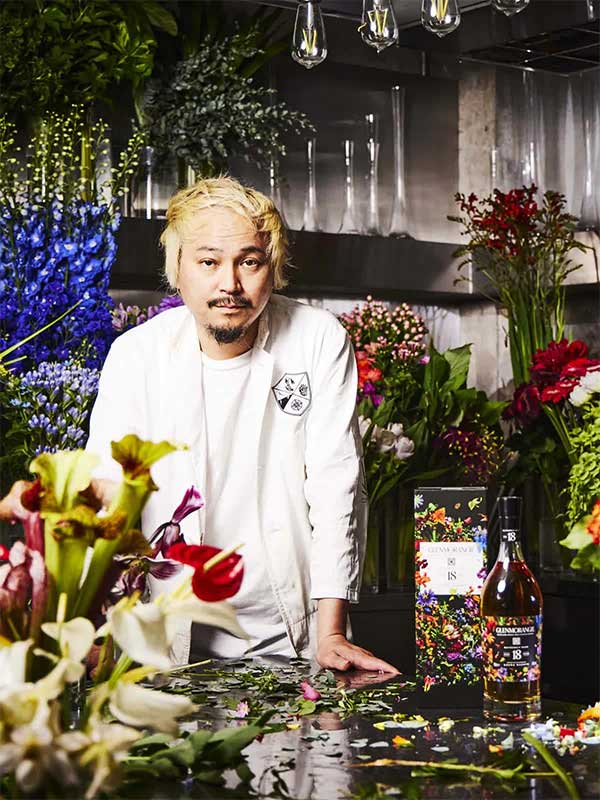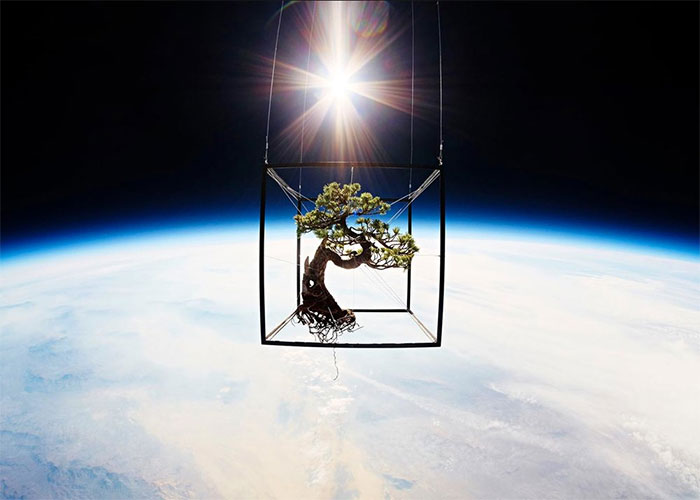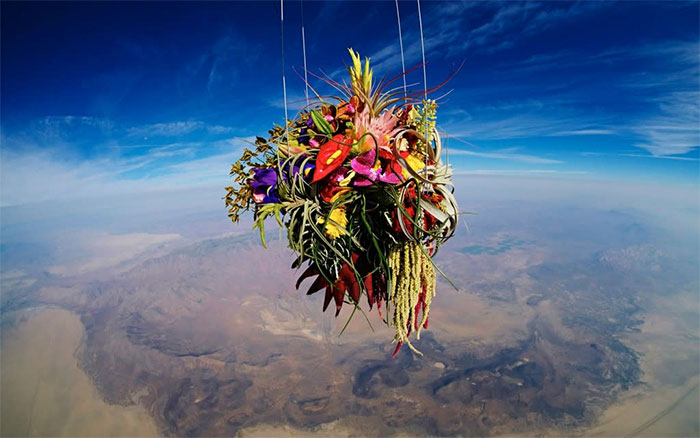Azuma Makoto - Pioneer in the project of bringing trees into space
In collaboration with JP Aerospace, Azuma Makoto and his colleagues managed to bring a 50-year-old white bonsai tree and many other plants such as orchids, hydrangeas, lilies. spatial.

Azuma Makoto is a Japanese artist born in Fukuoka Prefecture in 1976. Most of his work revolves around floral art, especially sculptures and plant installations. Early in life his dream was to become a musician, for that reason Makoto moved to Tokyo.
It was there, to earn money, that he began working at a florist shop. This fact completely changed his life because it was there that he discovered the beauty of flowers and the similarities between them and music. Starting in 2002, this Japanese artist started to innovate with the installations and sculptures he made, becoming a pioneer in the field and achieving a lot of popularity on the level. international. When you ask Makoto about his artistic methods, he will definitely start talking about scissors.
Makoto believes that if you want to achieve anything great, you must have tools you can trust. For him, being able to accurately cut flowers is one of the secrets to creating his works of art.

Azuma Mokoto was the first artist to bring bonsai into space. With some rope, he hangs a 50-year-old Japanese white pine tree in a cubic metal frame. This bonsai comes from Azuma's personal collection and he designed the frame that hangs below a helium balloon to bring the small plant into the stratosphere. Then he did the same thing with a bouquet of flowers. Volunteers from JP Aerospace in California helped Azuma install satellites with GPS sensors and GoPro cameras to document the trip. On a dawning morning in July 2014, the tree rose out of the sky of the Black Rock Desert in Nevada and these images were captured.

Working from midnight until dawn the next day, Azuma's team had to make sure the plants and their props were correctly hooked up to the helium-filled balloons. Various types of tracking devices, cameras, and camcorders were also brought along with the plants to record memorable images of the flight.
On his website, Azuma has shared very meaningful messages about his project. He wrote: "Plants on this Earth are always rooted in the ground due to the influence of the law of gravity. Roots, soil, gravity, plants have no other beauty than 'life'? When plants Objects taken out of the Earth, they have to endure a harsh environment at an altitude of 30,000 meters in a cold of -50 degrees Celsius. They travel towards the beautiful sun in the fierce winds of space. when not being restrained by anything anymore, plants will be free to head to space beyond Earth".

In 2002, he opened his own flower studio called Jardins des Fleurs in collaboration with photographer Shunsuke Shiinoki. To Makoto: 'Flowers are an inherently beautiful entity, as soon as they bloom in a field. We humans remove them from their natural state by cutting them off. And then we put those flowers together. Therefore, it is necessary to turn it into something even more beautiful so that the life of these flowers and trees does not become meaningless. By placing them in extreme circumstances, such as space or the desert, I can give them a special beauty by presenting them in a way that no one has seen before. That form of expression was the only viable option for me'.

Azuma Makoto "assembles" expressive flowers into fascinating works and gives them a different look, a different function in life, that of feeling. In this regard, Makoto sent floral and ornamental works to the stratosphere and documented their journey in an experiment called Exobiotanica. He has also hung trees deep in the ocean, in the snow or in the desert and dried frozen flowers and mushrooms in acrylic covers, to symbolize the tranquil beauty standing in the face of destruction.

An example of this idea is Block Flowers, which he believes represents 'the wish for time to stop and forever retain the beauty when it was first formed'. Beauty in flowers or plants is ephemeral; Their mesmerizing colors, wonderful scents, and delicate shapes also don't last long. The artist's desire is to capture this beauty, as it can disappear in a few days.

Or with his other works of art that are done on Earth and include placing flowers in blocks of ice, specifically 16 large blocks of ice. The artist's aim in this work is to explore the representation of flowers in an environment different from the usual one and also to reveal the interplay of ice and flowers, creating a contrast. truly admirable.
- Pioneer 10 - the mission of the pioneer
- It was the 'culprit' that made the ships change their speed when in outer space
- The pioneer in the American space sector died
- NASA's Artemis vessel has been completed, ready to take the first woman to the Moon
- Discovered an algae that lived up to 2 years in space
- Iran successfully put the second monkey into space
- NASA takes people to space in 2017
- Iran will postpone indefinitely the project of bringing monkeys to space
- NASA cherished bringing the first woman to the Moon
- India will take people to space
- The project turns trees into multi-purpose biological sensors
- After 54 years of neglect, the first cat to fly into space was reclaimed fairly
 Van Allen's belt and evidence that the Apollo 11 mission to the Moon was myth
Van Allen's belt and evidence that the Apollo 11 mission to the Moon was myth The levels of civilization in the universe (Kardashev scale)
The levels of civilization in the universe (Kardashev scale) Today Mars, the sun and the Earth are aligned
Today Mars, the sun and the Earth are aligned The Amazon owner announced a secret plan to build a space base for thousands of people
The Amazon owner announced a secret plan to build a space base for thousands of people